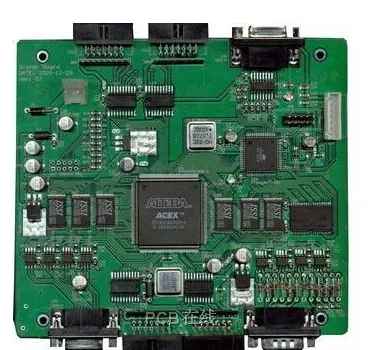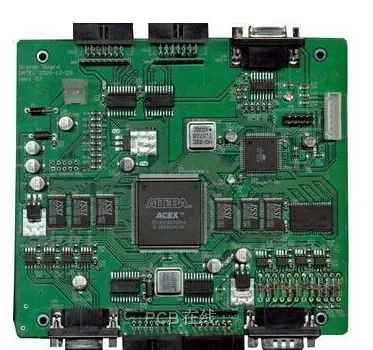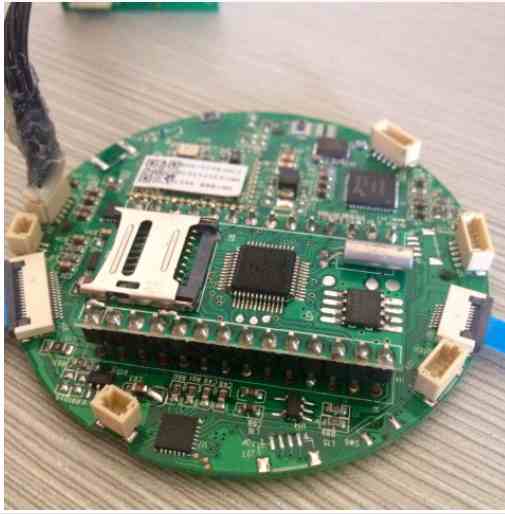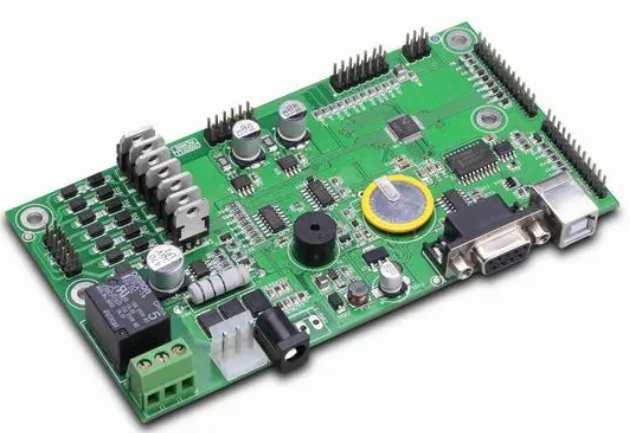
The basic elements of SMT chip processing technology
Screen printing (or distribution) -> Assembly -> (curing) -> Reflow welding -> Clean -> Test -> rework
Screen printing: Its function is to print solder paste or repair glue on the PCB pad to prepare the component for welding. The equipment used is a screen press (screen press), located at the very front of the SMT production line.
Dispensing: It is a type of glue that drops glue to a fixed position on the PCB. Its main function is to fix components to the PCB. The device used is the distributor located in front of the SMT line or behind the inspection device. https://www.kingfordpcb.com/yuan.php
https://www.kingfordpcb.com/yuan.php
Mounting: Its function is to precisely mount surface-mounted components in fixed positions on the PCB. The equipment used is the placement machine located behind the screen press on the SMT line
Curing: Its function is to melt the patch glue so that the surface mount component and the PCB board are firmly connected. The equipment used is a curing furnace located behind the laying machine on the SMT line.
Reflow welding: The function is to melt the solder paste to make the surface mount components and PCB board firmly connected. The equipment used is a reflow furnace located behind the SMT machine on the SMT line.
Cleaning: Its function is to remove the residual solder (such as flux) that is harmful to the human body on the assembled PCB. The equipment used is a washing machine, which can be fixed or offline.
Over the past few decades, our path has changed. The change is that vehicles are getting smarter. The benefits of doing so are numerous, including the significant work of shifting operational and safety responsibilities from the driver to the car's systems. For example, many vehicles now have automatic braking systems, such as Automatic Emergency Braking (AEB), to try to slow down the vehicle to avoid an emergency.
Even more revolutionary are electric and self-driving cars on the road. Although EVs and AVs are based on different technological advances, both are possible, and both rely on circuit boards that provide monitoring, control, and driving for the mechanical systems that carry out the car's functions.
In order to achieve the intelligent operation requirements of advanced automotive systems, specific basic automotive PCB design guidelines must be followed, which we describe in this article. These guidelines can best be understood by first exploring the challenges of designing circuit boards for these vehicles.
A major consideration when designing automotive systems, as well as systems electronics for other critical industries such as aerospace and medical systems, is safety. Therefore, your PCBA design, manufacturing and testing must comply with automotive industry standards and regulations. In addition to providing general safety for drivers, these documents also help address the challenges of designing PCbas for EVs and electric vehicles, as described below.
There has been a steady increase in the number of consumers choosing to abandon internal combustion engine vehicles and buy electric vehicles, including battery electric vehicles (BEVs), hybrid electric vehicles (HEVs) and plug-in hybrid electric vehicles (PHEVs), which are more environmentally friendly and often have higher MPG ratings for growth. There are many reasons for this trend. However, the most important factors may be comparable performance, range autonomy and price, as well as low repeat costs. However, designing circuit boards for these vehicles is not without challenges.
1. High voltage and high current Since either or both of high voltage and high current are used for charging and storage, the operation of an EV system must include a circuit board that can process, convert, and distribute electrical parameters at multiple levels. Like industrial environments, automotive HPC panels are susceptible to problems caused by surface tracking arcing. Arcing on high current plates can also be a problem due to the following reasons crawling and clearance distances do not meet standard requirements.
2. Either or both of the thermal resistance high pressure plate and the current plate usually use high power components that produce a higher than average heat volume. Therefore, good thermal resistance management is crucial to your car design.
High voltage, high current and thermal issues are important considerations when designing AV. However, the challenges discussed below are of greater concern.
Safety is an important issue for autonomous vehicles, especially for vehicles at level 3 or higher. At these levels, autonomous vehicles are able to control most vehicle operations, including autonomous driving. Therefore, reliable operation at the top of the following list of AV PCBA design challenges. For example, AV object avoidance systems can cause accidents. Another major issue common to circuit board design in all automotive systems is the structural integrity of the circuit board to withstand shock and vibration.
There is a need to design and follow a set of guidelines to mitigate or eliminate the negative impacts of EV and AV challenges, which will be discussed in the next section.
As mentioned above, there are obvious challenges when designing boards for use in AVs and EVs. Fortunately, there is a set of automotive PCB design guidelines that, if followed, will go a long way in ensuring that your board development results in a high-quality, reliable PCBA.
The first requirement for designing a circuit board that meets the requirements of advanced automotive systems is to understand and follow applicable standards, such as the IPC-6012DA automotive standard.
2. Perform thermal analysis and optimize heat dissipation and distribution
It is imperative to apply for a good PCB cooling design including manufacturing considerations. However, the biggest concern is the heat dissipation technology, as one or both of the high voltage and high current components can create hot spots on the board.
3. Observe good grounding rules
Another important consideration when designing automotive system boards is grounding. Since the vehicle is not in contact with the ground, its electronic systems must be designed to take advantage of chassis grounding technology.
4. Make sure your CM partner has an agile manufacturing flow
Automotive systems are made up of many elements, many of which are both circuit boards and electronic components. Designing PCBA machining for these complex systems can be a dynamic process that must be adjusted to changes in performance, operation, or other objectives. The best way to ensure that the development process can respond quickly in this environment is to work with CM that integrates CM. Agile manufacturing capability.
5. Work with your CM throughout the design process
Working with the right CM is critical to optimizing your automotive PCBA development. Moreover, this relationship should start with the design and exist throughout the development process so that your design intentions are accurately incorporated and reflected in the final product at every stage.









